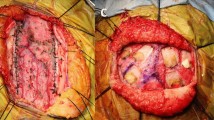Abstract
The importance of the posterior cerebral artery (PCA) involvement in moyamoya disease has been highlighted in recent years. However, few studies compared the impact of PCA lesions in moyamoya disease between pediatric and adult patients. We conducted this study to summarize the clinical features of moyamoya patients with PCA lesions and describe the difference between pediatric and adult patients. We reviewed the records of 696 consecutive moyamoya vasculopathy patients from 2009 to 2015. The Suzuki and the Miyamoto stages were used to evaluate the steno-occlusive lesions of the anterior and posterior arteries. Clinical and radiographic features were compared between those with and without PCA involvement, also between pediatric and adult patients. A total of 574 angiograms (140 pediatrics and 434 adults) were reviewed. The prevalence of PCA steno-occlusion did not differ significantly between pediatric patients and adult patients (35.0% vs. 30.4%, P = 0.347). Pediatric patients had more advanced PCA stages compared to adult patients (P = 0.045). There was a significant correlation of the PCA angiographic stages with the ipsilateral internal carotid artery (ICA) stages, both in pediatrics and in adults (both P < 0.001). The frequency of ipsilateral cerebral infarction positively correlated with the advancement of PCA stages in adult patients (P < 0.001), but not significant in pediatric patients (P = 0.106). Pediatric patients tend to have more advanced PCA lesions than adult patients. The degree of PCA steno-occlusion positively correlates with the ipsilateral ICA stage, both in pediatrics and in adults.

Similar content being viewed by others
References
Scott RM, Smith ER (2009) Moyamoya disease and moyamoya syndrome. N Engl J Med 360:1226–1237. doi:10.1056/NEJMra0804622
Suzuki J, Takaku A (1969) Cerebrovascular moyamoya disease: disease showing abnormal net-like vessels in base of brain. Arch Neurol 20:288–299. doi:10.1001/archneur.1969.00480090076012
Kuroda S, Ishikawa T, Houkin K et al (2005) Incidence and clinical features of disease progression in adult moyamoya disease. Stroke 36:2148–2153. doi:10.1161/01.STR.0000182256.32489.99
Mugikura S, Takahashi S, Higano S et al (1999) The relationship between cerebral infarction and angiographic characteristics in childhood moyamoya disease. Am J Neuroradiol 20:336–343
Togao O, Mihara F, Yoshiura T et al (2006) Cerebral hemodynamics in moyamoya disease: correlation between perfusion-weighted MR imaging and cerebral angiography. Am J Neuroradiol 27:391–397
Miyamoto S, Kikuchi H, Karasawa J et al (1984) Study of the posterior circulation in moyamoya disease. Clinical and neuroradiological evaluation. J Neurosurg 61:1032–1037. doi:10.3171/jns.1984.61.6.1032
Yamada I, Himeno Y, Suzuki S, Matsushima Y (1995) Posterior circulation in moyamoya disease: angiographic study. Radiology 197:239–246. doi:10.1148/radiology.197.1.7568830
Mugikura S, Higano S, Shirane R et al (2011) Posterior circulation and high prevalence of ischemic stroke among young pediatric patients with moyamoya disease: evidence of angiography-based differences by age at diagnosis. Am J Neuroradiol 32:192–198. doi:10.3174/ajnr.A2216
Lee JY, Kim S-K, Cheon J-E et al (2013) Posterior cerebral artery involvement in moyamoya disease: initial infarction and angle between PCA and basilar artery. Childs Nerv Syst 29:2263–2269. doi:10.1007/s00381-013-2123-7
Mugikura S, Takahashi S, Higano S, Shirane R (2002) Predominant involvement of ipsilateral anterior and posterior circulations in moyamoya disease. Stroke 33:1497–1500. doi:10.1161/01.STR.0000016828.62708.21
Hishikawa T, Tokunaga K, Sugiu K, Date I (2013) Assessment of the difference in posterior circulation involvement between pediatric and adult patients with moyamoya disease. J Neurosurg 119:961–965. doi:10.3171/2013.6.JNS122099
Research Committee on the Pathology and Treatment of Spontaneous Occlusion of the Circle of Willis, Health Labour Sciences Research Grant for Research on Measures for Infractable Diseases (2012) Guidelines for diagnosis and treatment of moyamoya disease (spontaneous occlusion of the circle of Willis). Neurol Med Chir (Tokyo) 52:245–266
Funaki T, Takahashi JC, Takagi Y et al (2013) Impact of posterior cerebral artery involvement on long-term clinical and social outcome of pediatric moyamoya disease. J Neurosurg Pediatr 12:626–632. doi:10.3171/2013.9.PEDS13111
Miyatake S, Miyake N, Touho H et al (2012) Homozygous c.14576G>A variant of RNF213 predicts early-onset and severe form of moyamoya disease. Neurology 78:803–810. doi:10.1212/WNL.0b013e318249f71f
Sato T, Sato S, Suzuki J (1980) Correlation with superior cervical sympathetic ganglion and sympathetic nerve innervation of intracranial artery-electron microscopical studies. Brain Res 188:33–41
Kajikawa H, Inagawa T, Ishikawa S et al (1973) Studies on adrenergic innervation of the cerebral vessels using a histochemical fluorescent method. Hiroshima J Med Sci 22:169–180
Cooke JP, Stamler J, Andon N et al (1990) Flow stimulates endothelial cells to release a nitrovasodilator that is potentiated by reduced thiol. Am J Physiol 259:H804–H812
Lee W-J, Jung K-H, Lee K-J et al (2016) Sonographic findings associated with stenosis progression and vascular complications in moyamoya disease. J Neurosurg 125:689–697. doi:10.3171/2015.6.JNS15933
Suzuki J, Kodama N (1983) Moyamoya disease—a review. Stroke 14:104–109. doi:10.1161/01.STR.14.1.104
Singhi P, Choudhary A, Khandelwal N (2013) Pediatric moyamoya disease: clinical profile, literature review and sixteen year experience from a Tertiary Care Teaching Institute. Indian J Pediatr 80:1015–1020. doi:10.1007/s12098-013-1000-4
Author information
Authors and Affiliations
Corresponding author
Ethics declarations
Conflict of interest
The authors declare that they have no conflict of interests.
Ethical standards
The study was approved by the Beijing Tiantan Hospital Research Ethics Committee.
Informed consent
Patients provided their informed consent prior to this study.
Funding
This study is supported by “13th Five-Year Plan” National Science and Technology Supporting Plan (2015BAI12B04), the National Natural Science Foundation of China (81371292) and the Beijing Municipal Administration of Hospitals’ Mission Plan (SML20150501).
Rights and permissions
About this article
Cite this article
Zhao, M., Zhang, D., Wang, S. et al. Posterior circulation involvement in pediatric and adult patients with moyamoya disease: a single center experience in 574 patients. Acta Neurol Belg 118, 227–233 (2018). https://doi.org/10.1007/s13760-017-0844-1
Received:
Accepted:
Published:
Issue Date:
DOI: https://doi.org/10.1007/s13760-017-0844-1




